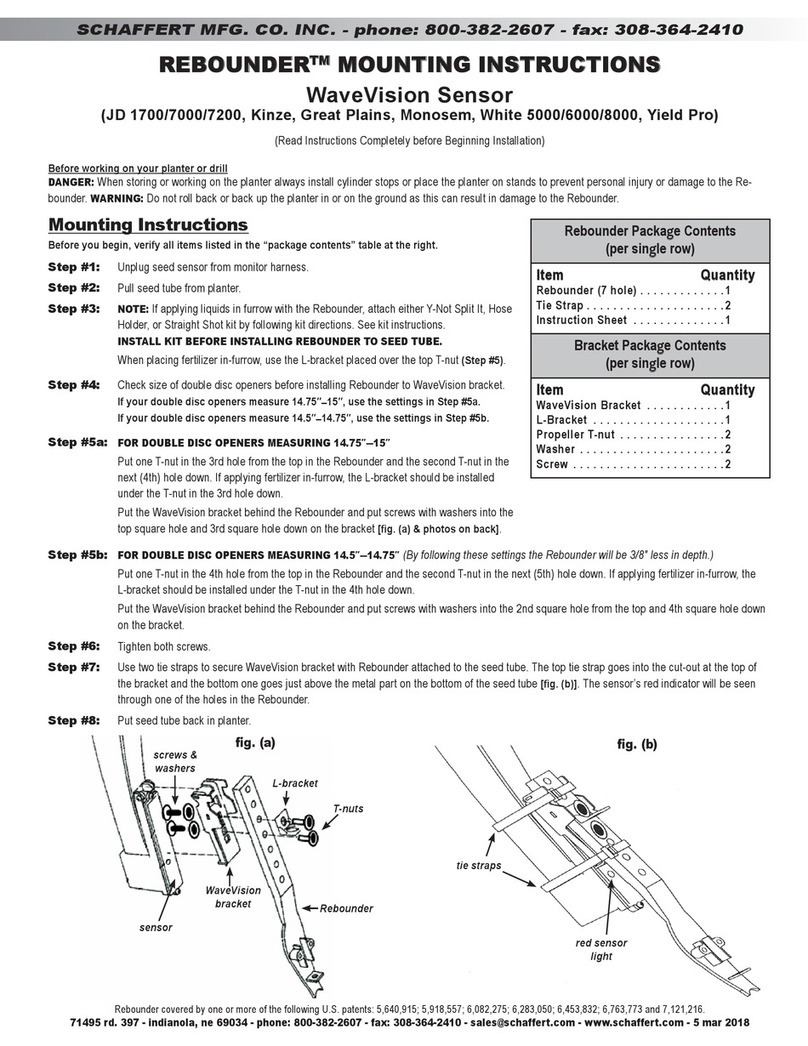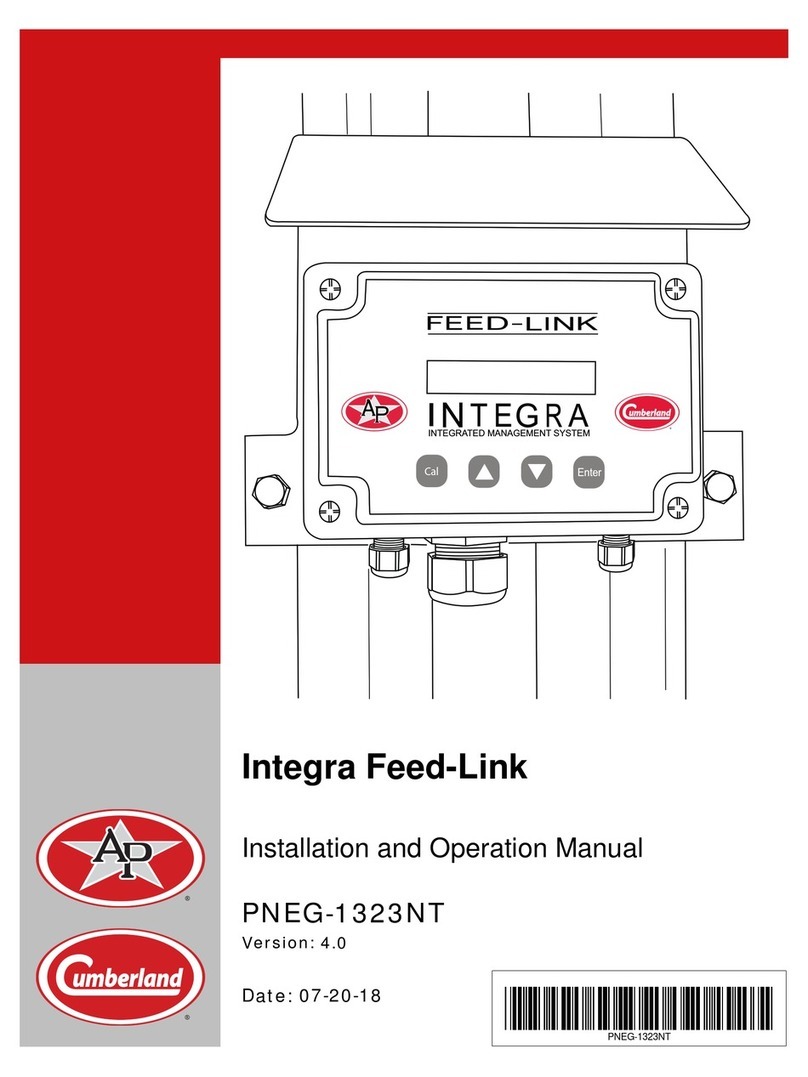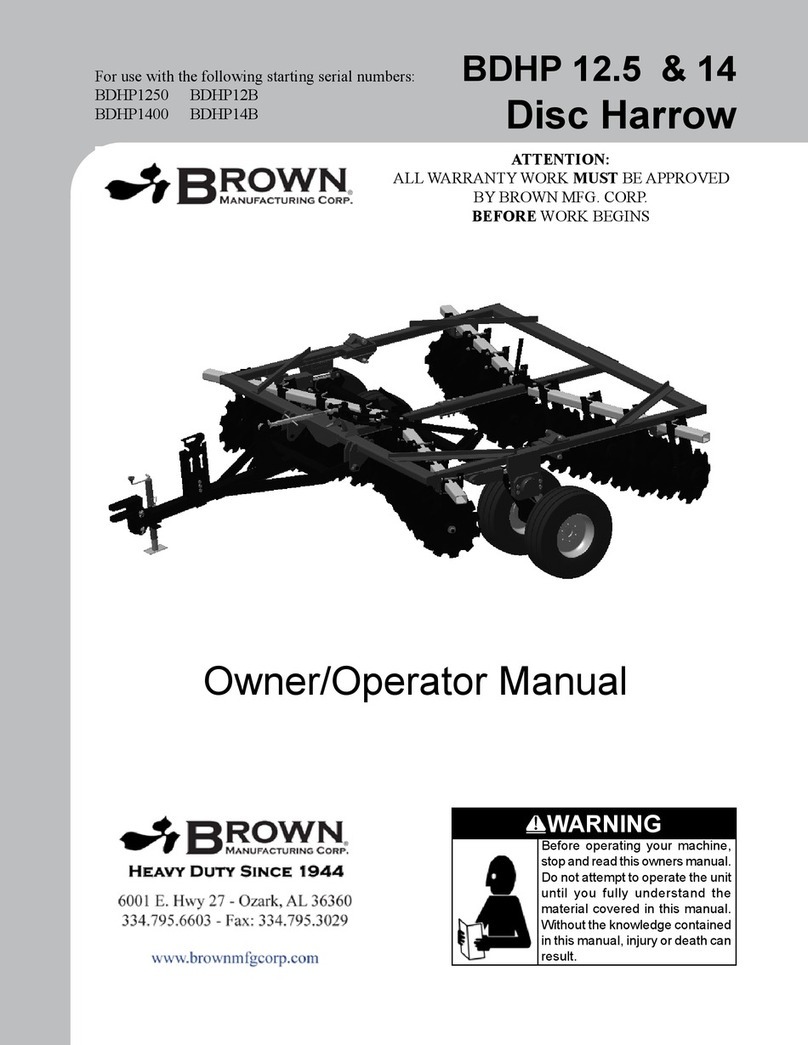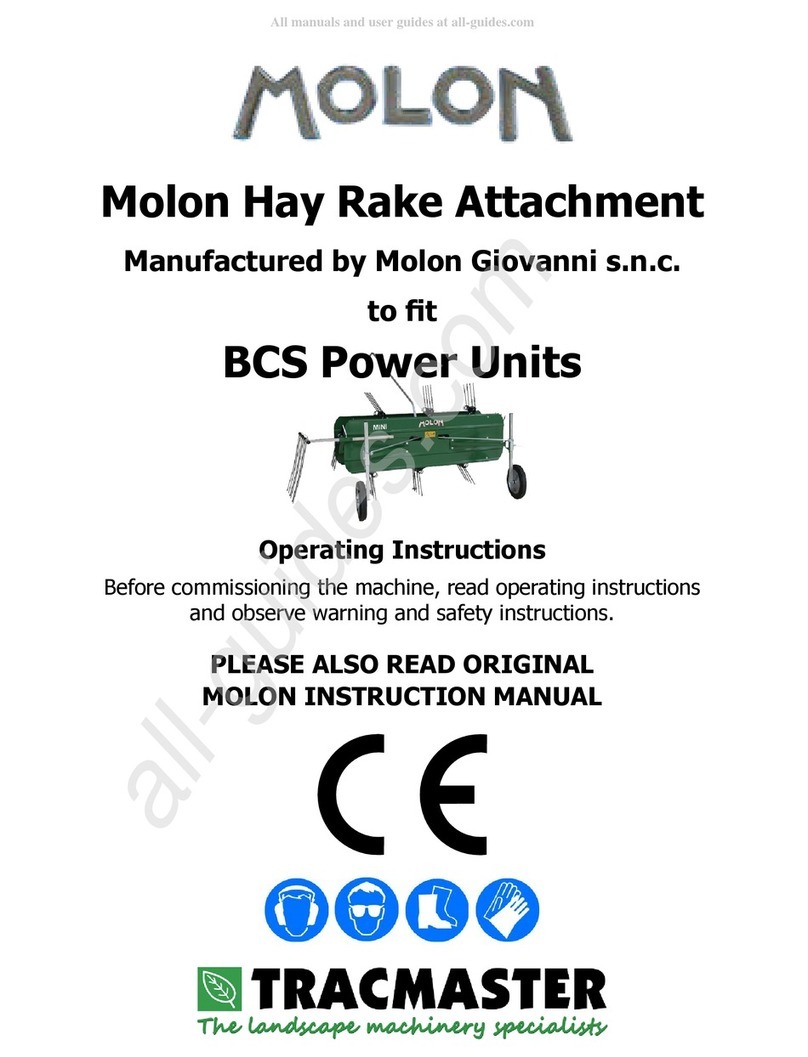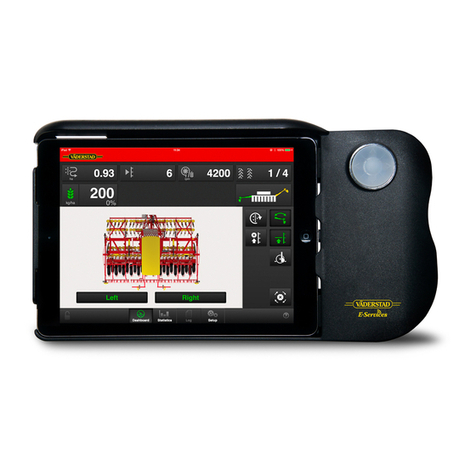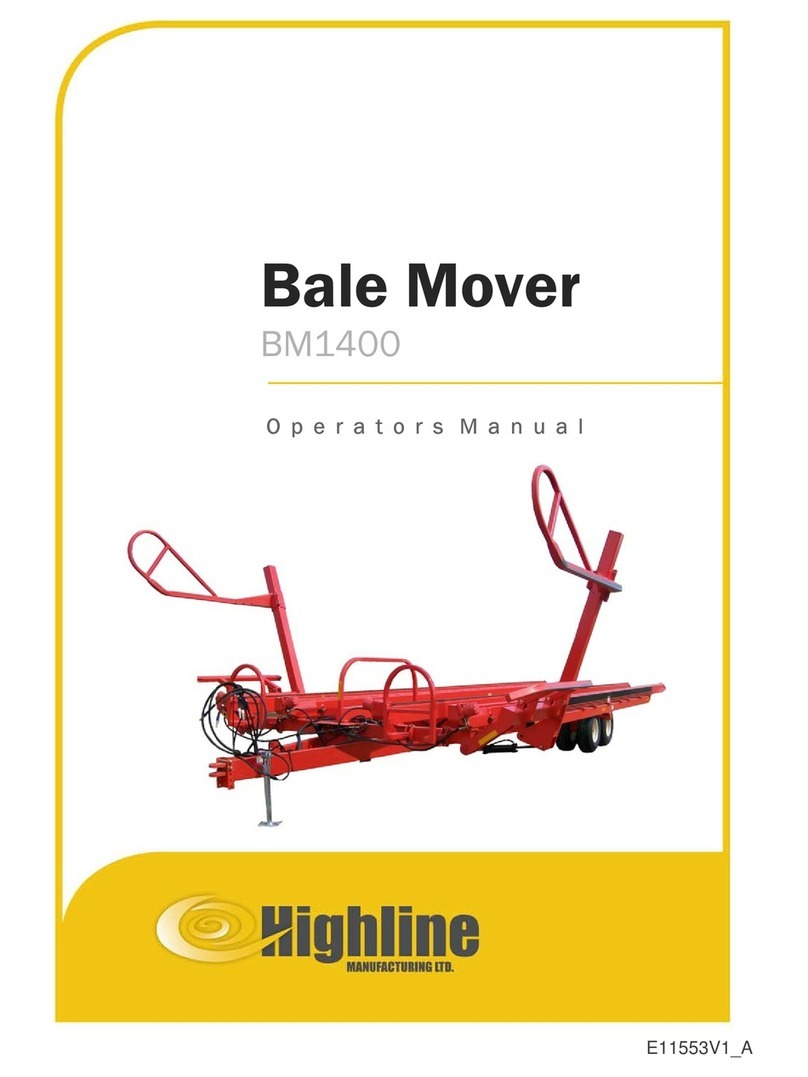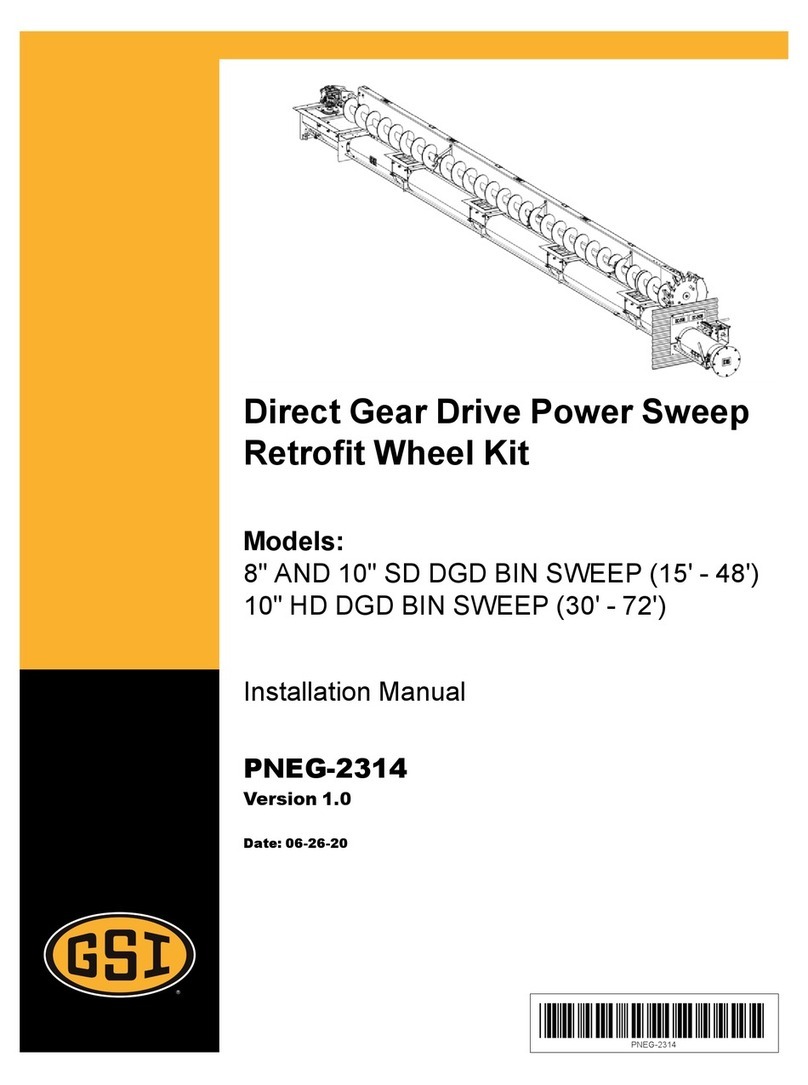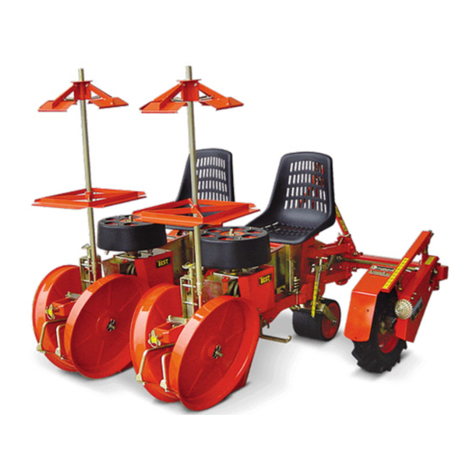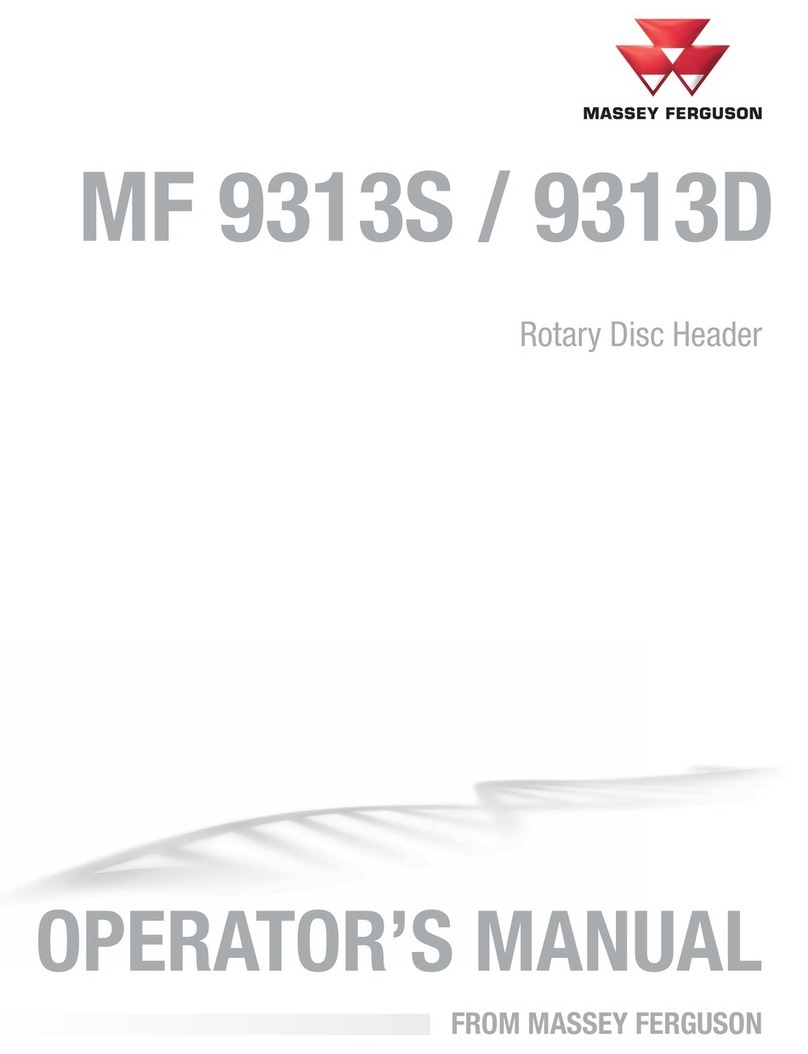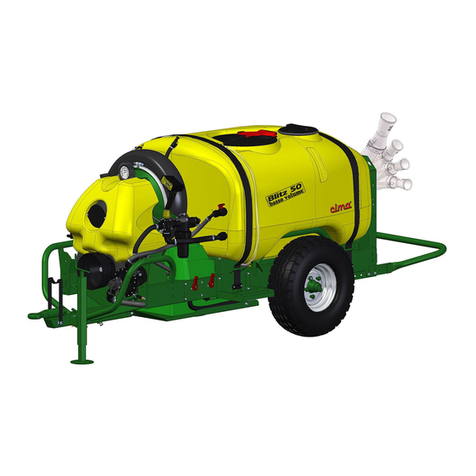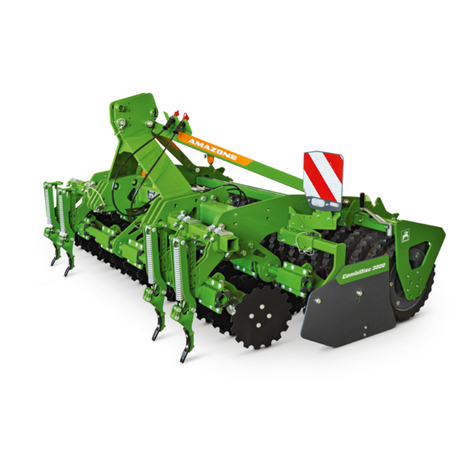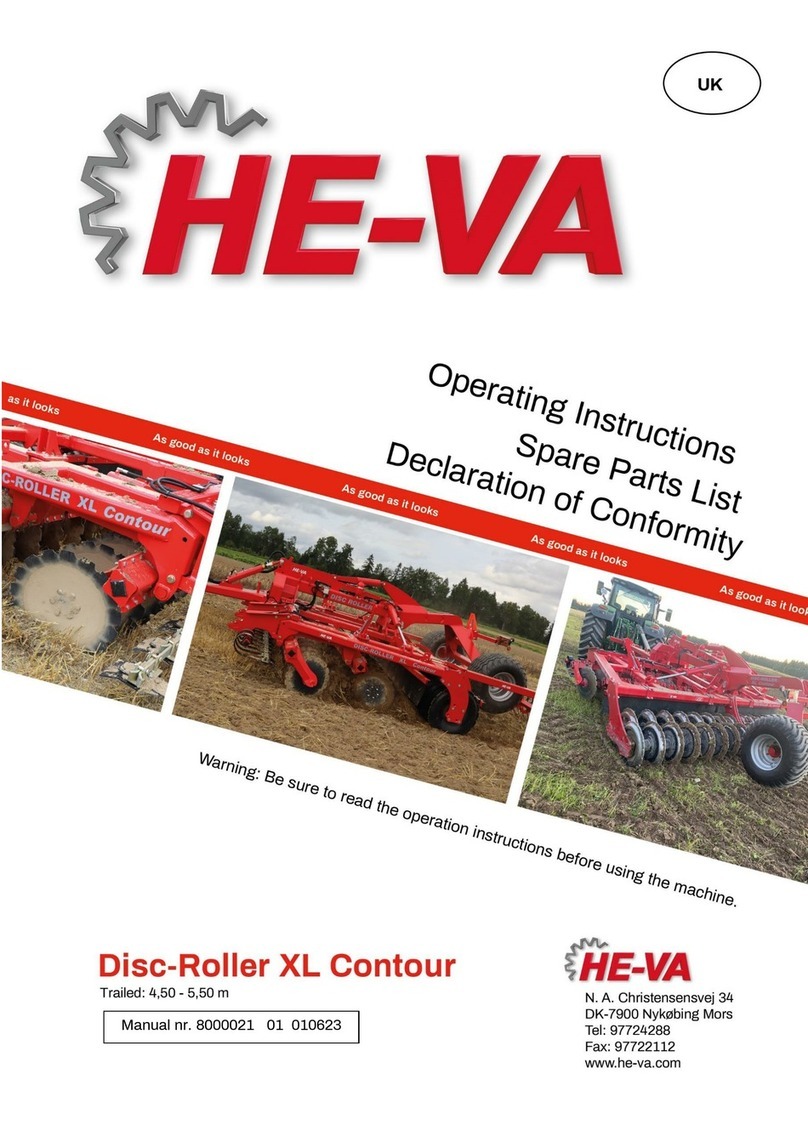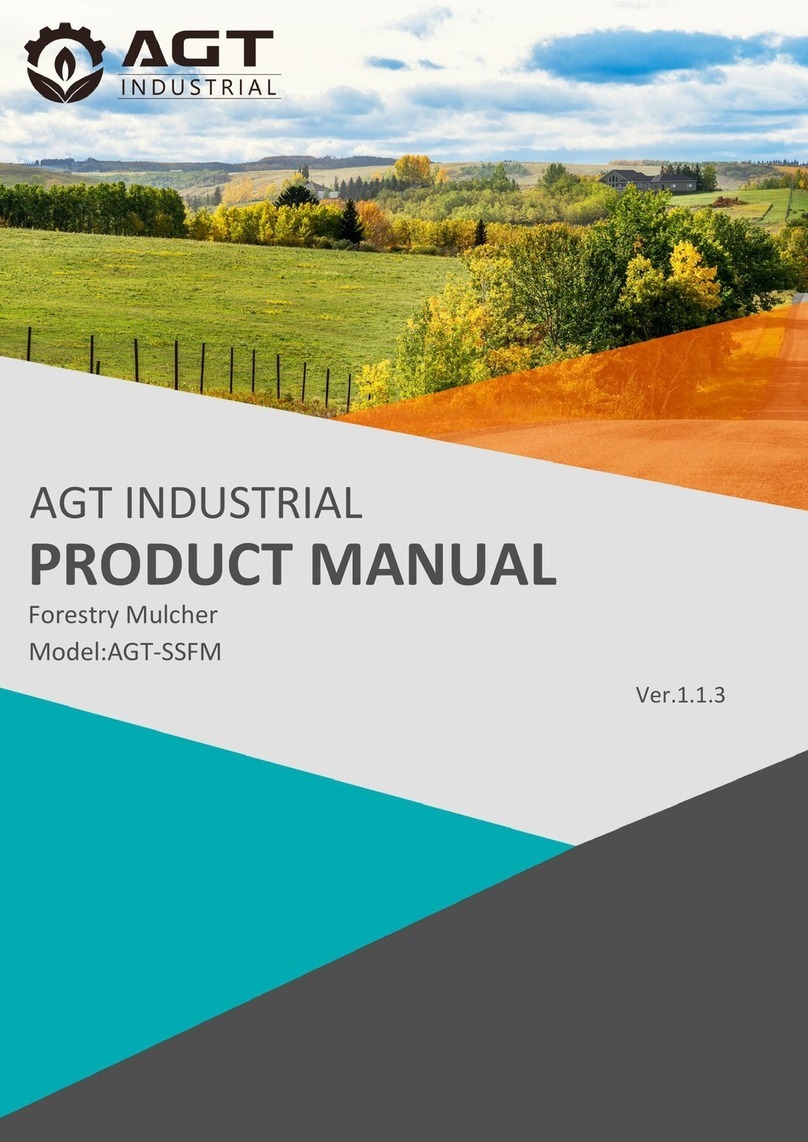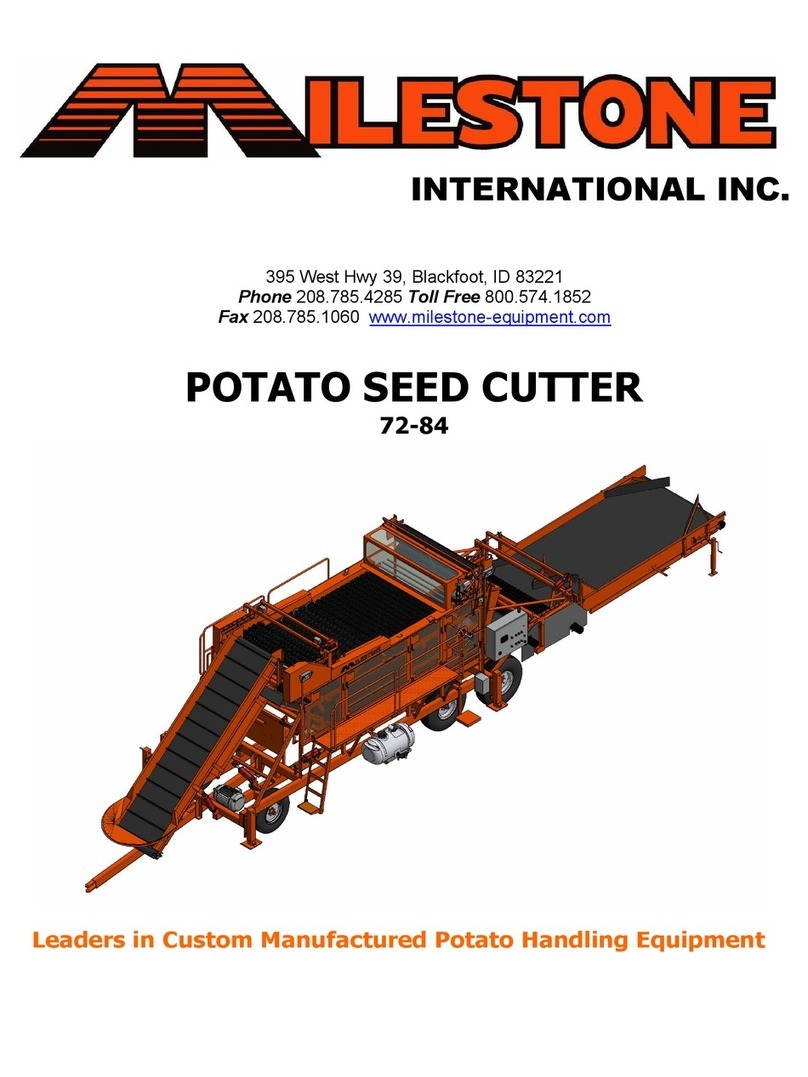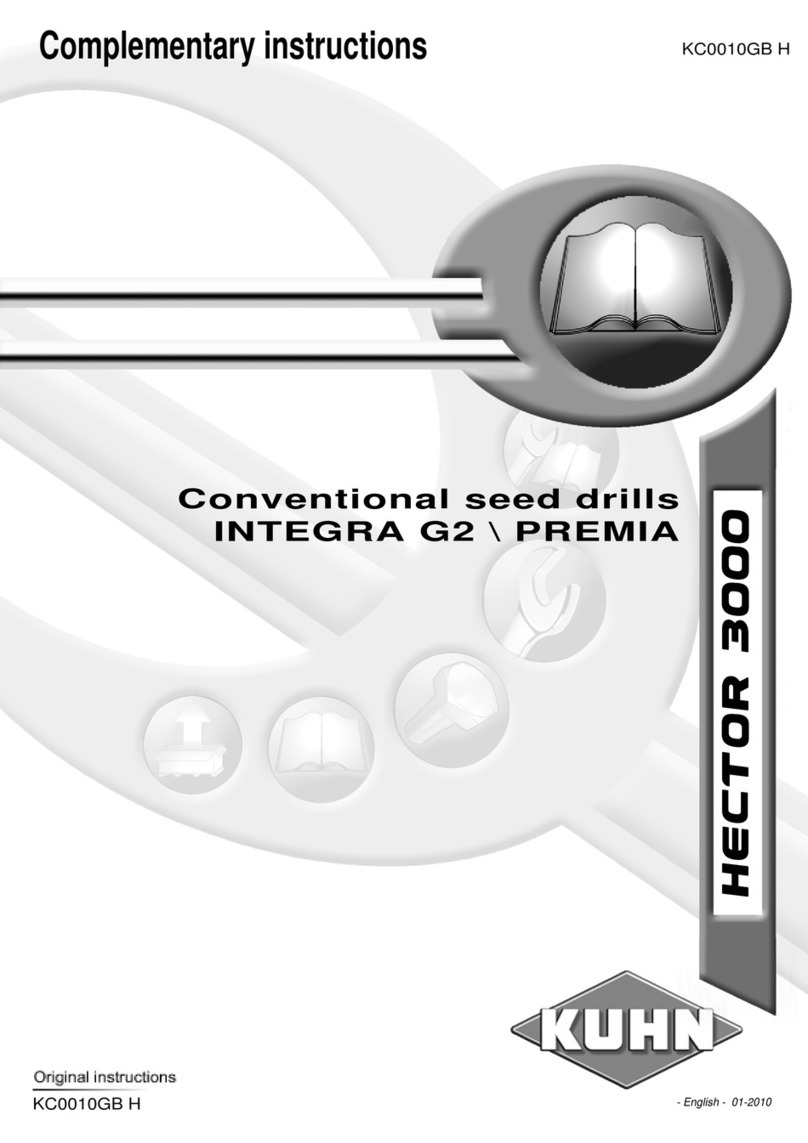
8
Mount the winch to the three point linkage system of the tractor by using three coupling pins.
The lower links of the tractor must be attached with screws to prevent the transverse
movement of the winch.
The winch is driven by a PTO shaft, which should correspond to necessary drive power of
the winch - see Technical Data - chapter 1.3.
Prior to work, lift the supporting legs of the winch
When first mounting the winch, check the P.T.O. shaft length.
Check the P.T.O. shaft length, by lifting and lowering the winch to determine the shortest
distance between the connecting shafts. In this position, the tubes of the mounted P.T.O shaft
should be approx. 20 mm shorter.
In case P.T.O. shaft is too long, it must be shortened:
Saw off steel and plastic tubes on both ends to the same length. Afterwards file down,
clean and grease the edges.
Always place the winch on the level surface. After disconnecting the winch from the tractor,
PTO shaft may remain mounted to the winch and laid on the hook.
3. CONNECTING THE WINCH
4. FUNCTION AND OPERATION OF THE WINCH
Observe all safety instructions (Chapter: 2.)!
Also follow important tips in the frames!
4.1. RELEASE THE WIRE ROPE (PERMANENT BRAKE RELEASE) (Figure 4)
By pulling the white string 1, pull the brake handle 3 until it locks in place. The brake band
is released now and the drum turns freely. Now, the wire rope can be pulled off the drum.
Make sure that the wire rope pulling power is set correctly (Chapter: 4.5.).
When pulling the wire rope, use constant force, without jerking which may cause the
loosening of the wire rope on the drum and building loops.
When uncoiling the wire rope off the drum, be careful not to rip it off at the connecting point.
Model Dimensions Compatibility
PTO Shaft C Line-T 2BR +
KK560
1 3/8’’ Z6 – 1 3/8’’ Z6; LKK = 560 EGV 35 A, EGV 45 A
PTO Shaft C Line-T 4BR +
KK560
1 3/8’’ Z6 – 1 3/8’’ Z6; LKK = 560 EGV 45 AHK, EGV 55 A, EGV 55
AHK, EGV 65 A, EGV 65 AHK, EGV
65AHK ZS
PTO Shaft C Line-T 6BR +
KK560
1 3/8’’ Z6 – 1 3/8’’ Z6; LKK = 560 EGV 85 A, EGV 85 AHK, EGV 105
AHK, DGV 2X55 AHK
When using our machines, we recommend Tajfun PTO Shafts:
